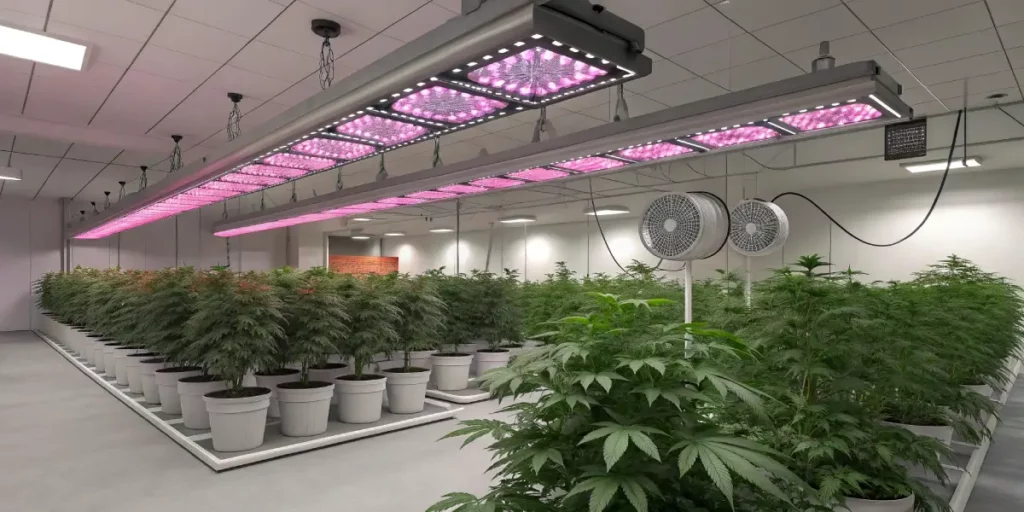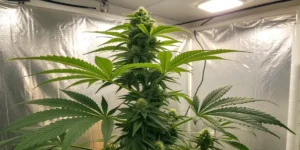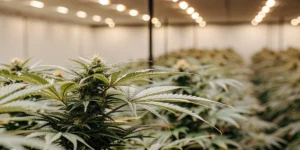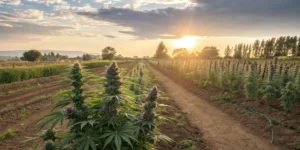Pink Kush, known for its potent effects and enticing aromas, is a highly sought-after strain among cannabis enthusiasts. Growing this strain requires a detailed understanding of its specific needs, ensuring successful cultivation. Begin by selecting high-quality seeds from reputable breeders to guarantee genetics quality. This strain demands particular attention in terms of environment, nutrients, and care throughout its growth cycle.
Start your seedlings indoors, where you can easily control the environmental conditions. This variety thrives in temperatures ranging from 65 to 80 degrees Fahrenheit. Maintaining a humidity level of around 40-50% during the vegetative stage is crucial for healthy growth. Use well-draining soil enriched with organic matter or consider a hydroponic setup for optimal results. This initial stage sets the foundation for future growth, so monitor conditions closely.
Once your seedlings have developed several sets of leaves, it’s time to transplant them into larger pots. This strain prefers a larger pot space to allow its roots ample room to grow. During the vegetative phase, ensure adequate light, providing around 18 hours of exposure. Full-spectrum LED grow lights or high-intensity discharge (HID) lamps work well to support vigorous growth. Trim and prune the plant regularly to encourage bushier growth and improve air circulation.
As the plant transitions to the flowering stage, typically occurring after about 8-10 weeks, reduce the light exposure to 12 hours a day. This shift signals the plant to start producing buds. During this phase, it’s vital to manage temperature and humidity levels carefully; aim for a slightly lower humidity of 30-40% to prevent mold and mildew on the dense buds. Monitor pH levels, ensuring they remain between 6.0 and 6.5 for soil, or slightly lower for hydroponics.
This variety is known for its dense, resin-coated buds that require proper nutrients to flourish. Use a high-phosphorus fertilizer during the flowering stage to support bud development. Avoid overfeeding, as nutrient burn can damage the plant. It’s advisable to flush the plants with plain water for at least a week before harvest to remove excess nutrients from the soil, improving flavor and potency.
Harvesting at the right time is crucial for potency and taste. Look for signs such as the change of pistil color and the development of trichomes, which should shift from clear to milky white. Careful drying and curing, maintaining a humidity level of around 60% and a temperature of 60-70 degrees Fahrenheit, are required to preserve the strain’s unique flavor and potent effects.
By following these steps and diligently maintaining optimal conditions, you can successfully cultivate this strain, bringing its renowned aroma, flavor, and relaxing effects to your personal cannabis garden while enjoying a rewarding growing experience.
Strain Overview: Traits, Effects & Genetics
Pink Kush is a renowned cannabis strain revered for its potent effects and visually striking aesthetics. As a member of the Kush family, this indica-dominant strain typically consists of approximately 90% indica and 10% sativa genetics. It is distinguished by its dense, pink-hued buds, which are often accentuated with dazzling trichomes and vibrant orange pistils. The plant itself is relatively compact in stature, making it an ideal choice for indoor cultivation. Its distinct sweet and floral aroma, sometimes reminiscent of vanilla and candy, adds to its overall appeal. The visual and aromatic traits together establish it as a top choice among cultivators and consumers alike.
On a genetic level, this variety is believed to be a descendant of the legendary OG Kush, carrying with it the esteemed lineage that assures both potency and a unique profile. Its genetic structure results in a high THC content, often ranging between 18% to 24%, which contributes to its robust psychoactive effects. This potency makes it particularly appealing for those seeking intensive relaxation and stress alleviation. The genetic stability of this strain also means it usually exhibits consistent and predictable growth patterns, which is advantageous for growers aiming for reliable yields.
The effects are quintessentially indica, often delivering profound physical relaxation and sedation. This can make it an effective strain for managing symptoms of chronic pain, insomnia, and anxiety. Users typically experience a sense of euphoria and a calming effect that gently eases both mind and body into a restful state. However, the heavy sedative qualities often mean that it is best reserved for evening or nighttime use when its couch-lock effects can be fully appreciated. For those looking for a strain that balances rich flavors with therapeutic benefits, this variety remains a popular and highly esteemed option.
Optimal Environment to Grow Pink Kush Successfully
Pink Kush is a well-loved indica-dominant hybrid cannabis strain praised for its profound relaxing effects and visually appealing pink-tinted buds. To cultivate this strain successfully, one must create an environment that mimics its natural habitat. The first critical factor is temperature. This variety thrives in temperatures ranging from 20°C to 28°C (68°F to 82°F) during the day. At night, a slight reduction to 18°C to 22°C (64°F to 72°F) is ideal. This temperature range supports robust growth and protects the plants from stress and strain that could lead to longer flowering times or reduced yield.
Humidity levels are another crucial aspect of the optimal growing environment. During its vegetative stage, the plant benefits from higher humidity levels between 55% and 65%. This moisture level promotes healthy leaf development and contributes to robust growth. As the plant transitions to its flowering stage, it’s essential to gradually decrease the humidity to about 40% to 50%. This reduction helps prevent mold and mildew, common issues when growing dense, resin-coated strains. Including a reliable hygrometer in your grow space will help you monitor and adjust humidity precisely.
Lighting plays a crucial role in the successful cultivation of this strain. As with many cannabis varieties, it requires a consistent light cycle. Providing 18 to 24 hours of light during the vegetative phase encourages lush growth. When transitioning to the flowering stage, adjust the light cycle to 12 hours on and 12 hours off to stimulate bud development. LED grow lights are recommended due to their efficiency and spectral output, which can closely mimic natural sunlight. Ensuring proper light intensity and distribution will promote even growth and enhance the plant’s signature vibrant hue and resin production.
Besides temperature, humidity, and lighting, the choice of soil and nutrients greatly influences growth and yield. A rich, organic soil mix with excellent drainage provides the necessary foundation for robust root development.Supplement this with a balanced nutrient regime with heightened levels of phosphorus and potassium during flowering to support bud formation. Remember, overfeeding can be detrimental, so closely monitor plant health and nutrient intake, adjusting as necessary. Utilizing these environmental conditions will optimize Pink Kush’s growth potential, leading to a bountiful harvest of lush, aromatic buds.
Grow Room Setup for Pink Kush Plants
Setting up a grow room for Pink Kush, a popular indica-dominant strain known for its potent effects and vibrant pink pistils, requires attention to detail and a controlled environment. Begin by selecting a space that can accommodate the plants’ needs throughout their lifecycle. An indoor grow room offers the advantage of controlled lighting, temperature, and humidity, each of which is crucial for this strain’s optimal growth. Ensure the room is well-ventilated, with air circulation facilitated by exhaust fans and oscillating fans to prevent mold and pests while maintaining a consistent climate.
Lighting is a critical component for cultivating robust cannabis plants. Use high-intensity discharge (HID) lights such as metal halide (MH) bulbs during the vegetative stage, and high-pressure sodium (HPS) lights during flowering for optimal results. These lighting systems mimic the sun’s spectrum more accurately than other types and encourage vigorous growth and abundant resin production. Position lights so they provide ample illumination without overheating the plants, typically 18 to 24 inches above the canopy, adjusting as necessary to prevent leaf burn.
Maintaining the right temperature and humidity in the grow room is vital. During the vegetative stage, aim for temperatures between 70-85°F (21-29°C) and a humidity level of 40-60%. Once the flowering stage begins, lower the humidity to 30-40% to encourage resin production and prevent mold. Temperature should remain slightly cooler, between 65-80°F (18-26°C), during flowering to support dense bud development.
A nutrient-rich growing medium is also essential for successful cultivation. Whether growing in soil or hydroponically, provide a balanced nutrient mix high in nitrogen during the vegetative phase, and higher in phosphorus and potassium during flowering. Regularly monitor pH levels to ensure nutrient uptake, keeping them in the range of 6.0-7.0 for soil and 5.5-6.5 for hydroponic systems. With careful planning and ongoing monitoring, your grow room can become a thriving oasis for high-quality cannabis plants.
Indoor Growing Tips
Pink Kush is a potent Indica-dominant hybrid known for its vibrant colors and stress-relieving effects. When growing this indica-dominant strain indoors, it’s essential to create an environment that mimics its natural growing conditions. Start by ensuring that your grow space has ample ventilation and maintains a consistent temperature around 21-26°C (70-79°F). This variety thrives in a controlled environment where humidity levels are kept around 40-50% during the flowering stage to prevent mold growth and enhance resin production.
Lighting is another critical factor when cultivating indoors. This strain benefits from a strong light source, so consider using LED or HPS lighting to provide the necessary spectrum and intensity. Keep your lights on an 18/6 hour light cycle during the vegetative phase and switch to a 12/12 hour cycle once your plants begin to flower. Maintaining the appropriate distance between the lights and the canopy helps avoid light burn while ensuring adequate light penetration.
This plant is known for its bushy growth, so regular pruning and training techniques like topping and low-stress training (LST) can be beneficial. These methods not only help manage the plant’s height but also allow better light distribution and air circulation throughout the canopy. Be vigilant about monitoring your plants for any signs of nutrient deficiencies or pest infestations, as early detection and intervention are key to maintaining plant health and ensuring an abundant harvest.
When it comes to feeding, this variety prefers a balanced nutrient regime. During the vegetative stage, use a fertilizer rich in nitrogen to support leaf and stem development. As your plants transition to the flowering stage, switch to a nutrient mix higher in phosphorus and potassium to promote robust bud formation. Additionally, flushing your plants with plain water during the final week of flowering can improve the flavor and smoothness of the final product.

Outdoor Growing Tips
Pink Kush, a coveted strain known for its vibrant colors and rich terpene profile, can thrive in outdoor environments with the right care and attention. Like many indica-dominant strains, this variety prefers a warm, sunny climate, ideally resembling that of its native region in the Hindu Kush mountains. Start by choosing a location that receives abundant sunlight, as this strain requires extended exposure to direct sunlight to reach its full potential in terms of yield and potency.
Timing is crucial when growing this plant outdoors. It is generally recommended to plant after the last frost, typically in spring. This timing ensures the plant enjoys the longest possible vegetative period, which is essential for building a strong foundation before flowering. This strain is usually ready for harvest in late September to early October, helping to avoid the harshness of early frost that could damage the trichomes and affect quality.
When cultivating outdoors, soil quality and preparation are vital. This plant benefits from well-draining, nutrient-rich soil. You can enhance your garden plot by adding organic matter like compost or well-rotted manure, which will provide essential nutrients and help retain moisture. Regular testing of soil pH, aiming for a range between 6.0 and 6.8, is also important to ensure optimal nutrient uptake.
Pest management is another crucial aspect of outdoor cultivation. Due to its aromatic profile, this strain may attract a variety of pests. Implementing natural deterrents like neem oil or companion plants like marigolds can help ward off unwanted insects. Additionally, maintaining a clean growing environment by removing fallen leaves and debris can reduce the risk of pest infestations and diseases.
Watering requires a balanced approach. While the plant needs consistent moisture, especially during the hot summer months, it is crucial to avoid overwatering, which can lead to root rot or mold. Opt for a deep watering method every few days rather than shallow, frequent waterings, allowing the soil to dry out slightly between sessions and promoting strong, healthy root development.
How to Germinate & Propagate Pink Kush
Germinating Pink Kush seeds is the initial and crucial step in cultivating this acclaimed cannabis strain, known for its powerful indica effects and vibrant pink hairs. Start by acquiring high-quality seeds from a reputable source to ensure genetic stability and potent yields. The paper towel method is a popular and effective choice. Place the seeds between two moist paper towels and insert them into a sealed plastic bag to retain humidity, then store them in a warm, dark place such as a drawer or cupboard. Monitor closely, and you should see taproots emerge within 24 to 72 hours.
Once germination occurs, it’s time to transplant the seedlings into a suitable growing medium. Prepare small pots filled with a light, airy soil mix or a seed-starting mix to encourage healthy root development. Make a small hole in the center of the pot and place the germinated seed with the taproot facing downwards, covering it lightly with soil. Water gently to keep the medium moist but not waterlogged, as this can lead to damping-off, a condition hazardous to young plants. Situate the pots under adequate lighting, whether natural or artificial, and maintain temperatures around 70-80°F (21-27°C).
Propagation of this strain can also be achieved through cloning, a method favored by many growers for its ability to preserve the desirable traits of a mother plant. Select a healthy and vigorous plant as the donor. Using sterilized trimming scissors, cut a 4–6 inch branch, ensuring it has at least two nodes. Remove the lower leaves and dip the cut end in cloning gel to stimulate root growth. Place it into a small pot with a gentle growing medium or a specialized cloning box. Keep the humidity high, around 70–80%, and provide low-intensity light to prevent stress until roots establish, generally within two weeks.
Regardless of the method chosen, patience and attention to detail are key in the propagation process. By maintaining optimal environmental conditions and monitoring growth closely, cultivators can maximize their yields and ensure their plants thrive. Remember, germination and propagation set the foundation for the entire growth process, so take the time to do it right.
Vegetative Stage: Nurturing Your pink kush Plants
The vegetative stage of growing Pink Kush, a potent Indica-dominant strain, is a critical phase that lays the foundation for healthy development and robust yields. During this stage, the plant focuses on growing leaves, stems, and roots, establishing a structure capable of supporting the eventual buds. It is essential to provide your plants with adequate lighting, typically between 18 and 24 hours of light daily, depending on whether you opt for an 18/6 or 24/0 light cycle. LED or fluorescent lights are recommended for their efficiency and ability to maintain cooler temperatures.
Aside from lighting, maintaining the right temperature and humidity is imperative to nurture your crop during the vegetative stage. Aim for a temperature range of 70-85°F (21-29°C) to ensure optimal growth conditions. Moreover, this strain flourishes in a humidity range of 40-60%, which keeps the plants hydrated without risking mold development. Investing in a quality hygrometer and thermometer can help monitor these critical environmental factors, enabling you to adjust settings as necessary to sustain ideal growing conditions.
Feeding your plants properly during the vegetative stage is equally crucial. Focus on a high-nitrogen diet, as nitrogen is vital for foliage growth. Utilize a balanced cannabis-specific nutrient solution, applying it according to the manufacturer’s instructions to prevent nutrient burn. Throughout this stage, it is vital to monitor plant responses to feeding, watching for signs of deficiencies or excesses. Adjust nutrient concentrations as needed to ensure thriving plants, capable of delivering abundant yields during the flowering phase.
Besides to providing optimal light, temperature, humidity, and nutrients, consider employing techniques such as topping and training to maximize light exposure and promote bushier growth. Topping involves cutting the main shoot’s apex, encouraging lateral branch development and ultimately increasing potential bud sites. Meanwhile, training methods like low-stress training (LST) involve gently bending stems and securing them in place to optimize canopy exposure. These techniques are particularly beneficial for dense-growing strains and can significantly enhance your plants’ performance during flowering.
Ultimately, the vegetative stage is all about creating a supportive environment that allows your plants to thrive. By carefully regulating environmental conditions, providing appropriate nutrients, and employing growth-enhancing techniques, you can ensure your crop develops the vigorous structure necessary to support a high-yielding harvest. Attention to detail and patient care during this phase will set the stage for a successful flowering period and a rewarding cultivation experience.
Flowering: What to Expect
Pink Kush is a renowned cannabis strain celebrated for its aesthetically pleasing appearance, distinct aroma, and potent effects. As you progress into the flowering stage, expect this strain to display visually captivating characteristics. This stage typically lasts around 8 to 10 weeks, during which the plant’s buds develop a beautiful array of pink and purple hues that give the variety its name. The flowering stage showcases not only visual appeal but also shifts in aroma, richness, and intensity, which signal the forthcoming harvest of lavish and resinous buds.
During the early weeks of flowering, you will notice pistils sprouting from the plant’s nodes. These are the initial indicators of the forming buds. Over the next few weeks, the buds will begin to swell and become denser, with a notable increase in trichome production. The trichomes on this strain are dense, glistening with resin that signals very high levels of THC, which adds to its medicinal and recreational appeal. Alongside the visual flowering traits, the aroma will begin to develop. Typically, this variety emits a sweet, earthy scent with a hint of vanilla, which can become more pungent as the flowering stage progresses.
Cultivators should also pay special attention to the environmental conditions to optimize the flowering phase. Maintaining optimal temperature and humidity levels is crucial for maximizing bud development and preventing common cannabis issues such as mold or nutrient deficiencies. It’s advisable to keep the nighttime temperature slightly cooler than daytime to encourage the plants to bring out their characteristic coloration. Nutrient management is also crucial, with phosphorus and potassium being exceptionally important to support bud growth and health. Proper attention during the flowering phase ensures you harness the full potential of the strain’s yield and potency.
Harvesting the flowers at the correct time is paramount to capturing the complete profile. Watch for fluctuations in trichome color; a shift from clear to cloudy indicates peak potency, while amber suggests increased CBD levels. Usually, 70% to 80% cloudy trichomes are the sweet spot for harvesting. You can also observe the pistils’ color and structure—ideally when they have turned a rich amber tone and have curled inward. Proper drying and curing post-harvest are essential for maintaining the plant’s potency, aroma, and flavor, ensuring that the finished product embodies the full sensory experience this strain has to offer.
Feeding: Fertilizers & Nutrient Schedule
Pink Kush, renowned for its vibrant color and potent effects, requires a well-balanced feeding regimen to thrive. Just as with any cannabis strain, knowing the unique nutrient needs of this variety is essential for achieving high yields and quality buds. A good feeding schedule supported with the right fertilizers can enhance its growth and maximize its potential. Typically, the nutrient requirements change with each phase of the plant’s lifecycle, from vegetative to flowering stages.
During the vegetative stage, plants benefit from a higher concentration of nitrogen. Nitrogen is critical for sturdy stem development and lush, green foliage, which is why a fertilizer with an N-P-K ratio leaning towards the nitrogen component is recommended. Organic options or liquid fertilizers rich in nitrogen can facilitate healthy growth. Additionally, magnesium and calcium are essential micronutrients — these help in preventing deficiencies that can otherwise stunt growth or cause yellowing of leaves.
As the plant transitions into the flowering stage, the focus shifts towards phosphorus and potassium. These elements support bud development and overall plant health. A bloom fertilizer with a higher P-K ratio can promote robust flower production while ensuring the plant’s energy is channeled efficiently into budding. It’s crucial to gradually decrease nitrogen levels during this phase to prevent excessive leaf growth, which could impair bud formation.
Monitoring pH levels is another key aspect of nourishing your plants effectively. Strive to maintain a soil pH around 6.0 to 7.0 for soil grows, or 5.5 to 6.5 for hydroponics. This range allows optimal nutrient uptake. Overfeeding or underfeeding can lead to nutrient lockout, so regular pH checks and adjusting the feeding schedule accordingly are vital. Using a nutrient schedule chart can help track feeding times and prevent over-fertilization, ensuring your crop flourishes with strong, aromatic buds.
Regularly assessing the health of your plants, such as checking leaf color and firmness, can provide real-time indicators of their well-being. Adapting the nutrient schedule based on these observations can make the difference between a modest harvest and a bountiful crop. Always remember that less can sometimes be more; observe how your strain responds to each feeding and adjust as needed to provide a balanced and stress-free environment for optimum growth.
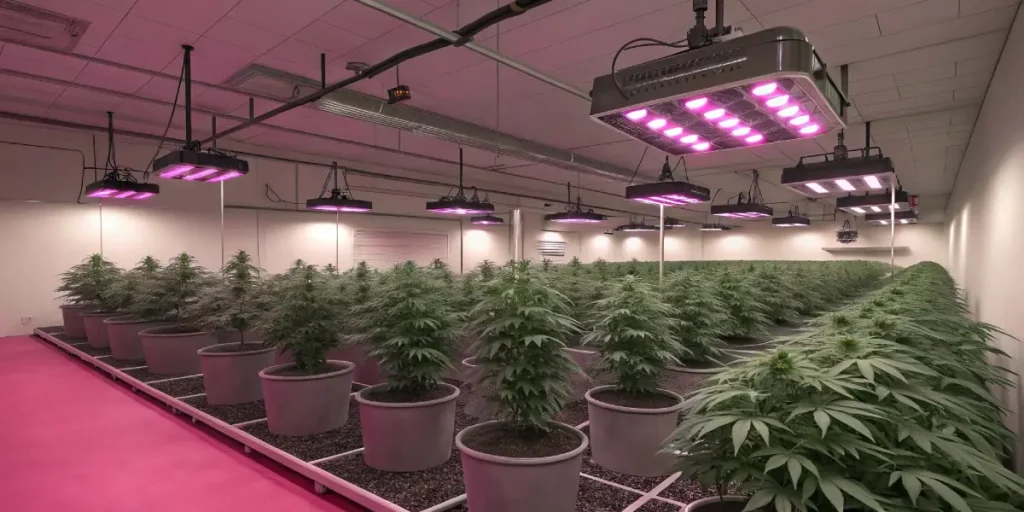
Pest and Disease Prevention for Healthy Cannabis Plants
Pest and disease prevention is crucial when cultivating Pink Kush, a popular cannabis strain known for its potent effects and sweet aroma. Ensuring healthy plant development means implementing comprehensive strategies to ward off various threats. First and foremost, the cornerstone of prevention is maintaining an optimal growing environment. This entails controlling temperature, light, and humidity.
This strain thrives in a stable environment where humidity levels are kept around 40–50%, particularly during the flowering stage, to prevent molds and mildew. Equally important is ensuring good air circulation to discourage pests and pathogens from taking hold.
Besides to environmental controls, regular inspection and monitoring of your plants are essential. Early detection of any signs of pest infestation or disease can save your entire crop from potential ruin. Checking the undersides of leaves for mites or aphids and watching for discolored spots or wilting can provide early warning signs. Utilizing tools such as magnifying glasses can help spot these tiny pests which can otherwise be easily missed. Implementing a routine where plants are frequently inspected helps to intercept issues before they become difficult to control.
Biological controls and organic methods should be integral components of your pest and disease prevention strategy. Beneficial insects such as ladybugs and predatory mites can be introduced to combat aphids and spider mites naturally. Moreover, applying neem oil or insecticidal soap can help deter pests without introducing harmful chemicals that could compromise the quality of your harvest. It is also advisable to maintain cleanliness around your grow space, as debris and dead plant matter can harbor diseases and provide a habitat for pests.
Lastly, employing an integrated pest management (IPM) approach is highly beneficial for sustaining the health of your cannabis plants. IPM combines a variety of techniques including mechanical, biological, and chemical tools to manage pest populations effectively while minimizing risks to people and the environment. Staying informed about the latest IPM strategies and continuously improving your techniques will aid in producing robust and healthy crops, ensuring a bountiful harvest of top-quality cannabis.
Harvesting & Drying Pink Kush the Right Way
Harvesting at the optimal time is crucial to maximize potency and flavor profile. This strain is renowned for its dense, vibrant buds and a distinctively rich aroma, which require careful observation as harvest time approaches. Typically, it’s ready to be harvested around 8 to 10 weeks into the flowering stage. Look for signs such as a majority of the pistils turning amber and trichomes developing a cloudy appearance. These indicators suggest that the plant has reached its peak THC content and is ready for harvest.
When the time is right, begin by cutting down the branches carefully to avoid trichome loss, which can negatively impact both the potency and flavor of the final product. Many cultivators prefer to harvest during the early morning hours when terpenes are most abundant, contributing to a more flavorful and aromatic end product. Wear gloves to minimize handling of the buds, protecting these sensitive compounds from degradation.
After harvesting, the drying process is critical in preserving the quality of the buds. Hang the branches upside down in a cool, dark, and well-ventilated area. Maintaining an environment with a temperature of 18–24°C (65–75°F) and a humidity level of around 50% is ideal to ensure a slow and even drying process. Ensure that there is adequate airflow around the buds to prevent mold growth while preserving the delicate terpene profile that gives this strain its characteristic aroma.
The drying phase usually lasts from 7 to 14 days, depending on environmental conditions. To check if the harvest is dry and ready for curing, try bending a small branch; it should snap, rather than bend. This indicates that the moisture content is low enough to proceed to the next stage of processing. Proper drying enhances the smoothness of the smoke and the overall experience.
Following the drying process, properly curing Pink Kush is essential to enhance its flavor and potency while reducing harshness. Place the dried buds into airtight jars, filling them only partially to allow for some airflow. Store these jars in a cool, dark place, and “burp” them daily by opening the lids for a few minutes to release excess moisture. This curing process can last from two weeks to several months, with quality improving over time, resulting in a smoother smoke and a more pronounced flavor profile.
Strain Type: Indica, Sativa or Hybrid?
Pink Kush is a renowned cannabis strain that has garnered popularity among enthusiasts for its potent effects and unique flavor profile. It is predominantly classified as an Indica-dominant hybrid, which means that it offers the best of both worlds—merging the relaxing, body-focused effects typically associated with Indicas, with the cerebral stimulation of Sativas. Due to its indica lineage, this strain is highly favored for its calming properties, making it an ideal choice for evening use when unwinding after a long day.
The indica dominance in this variety is evident in its physical characteristics and growing behaviors. Typically, indica plants are shorter and bushier compared to their sativa counterparts. This cultivar follows this pattern with its compact growth, making it a suitable option for indoor cultivation where space may be limited. Its dense foliage and broad leaves are indicative of its indica roots, requiring attention to pruning and airflow to prevent mold and pests, which can thrive in more humid conditions.
Despite its strong indica genetics, the hybrid nature of this strain allows growers and consumers to experience some of the uplifting effects typically associated with sativa strains. This subtle influence of sativa can provide mental clarity and creativity, complementing the deep relaxation from the indica traits without leading to a lethargic state. Thus, this variety is often appreciated for its balanced high, making it a versatile strain suitable for a variety of occasions and promoting a blissful state of tranquility.
This hybrid emerges with a dense network of pink hairs and brilliant trichomes, offering a stunning, almost ethereal appearance. Cultivators cherish it not only for its aesthetic delight but also for its generous yields. It can provide a rewarding harvest when given the proper care and nutrients, particularly phosphorus-rich fertilizers that support its flowering phase. The strain’s unique attributes make it a staple in both medicinal and recreational cannabis circles, celebrated widely for its soothing properties and distinctive flavor.
Why Grow Pink Kush? Key Benefits for Cultivators
Pink Kush is a popular choice among cannabis cultivators for several compelling reasons, making it a must-consider strain for both beginners and experienced growers. Known for its striking pinkish hairs and a blanket of glittering trichomes, this strain not only captivates with its appearance but also boasts a robust and resilient growth profile. As a member of the Kush family, it inherits a sturdy structure and high resistance to common pests and diseases, which simplifies the cultivation process significantly. This resilience reduces the demand for constant monitoring and affords growers more peace of mind when tending to their crop.
Another primary benefit of growing this variety is its favorable yield potential. Despite being a relatively short and bushy plant, which makes it ideal for indoor growing, it does not compromise on yield. It can deliver impressive harvests when cultivated under optimal conditions. Outdoor growers in suitable climates can also enjoy substantial yields, making it a versatile choice for different growing environments. This efficiency in space and yield contributes to its popularity in both personal and commercial cultivation settings, offering great returns on investment.
The appeal of this strain extends beyond its ease of growth and yield. It is revered for its potent effects and aromatic profile, which feature a blend of sweet vanilla and floral undertones that delight the senses. With a high THC content, it provides powerful relaxation effects and is sought after for its therapeutic benefits, including stress and pain relief. This makes it highly marketable and in demand among consumers, particularly those seeking relief from various ailments. For cultivators, the ability to grow a strain that is both potent and highly sought after provides an advantageous position in the market, ensuring steady demand and profitability.
Potential Challenges When Growing Pink Kush
Renowned for its vibrant appearance and potent effects, this strain is a popular choice among cannabis cultivators. However, it presents unique challenges that growers must navigate to achieve optimal yields. One of the primary challenges associated with growing this variety is its sensitivity to environmental conditions. It thrives in a controlled climate, where temperature and humidity levels must be maintained within specific ranges. Failure to provide these conditions can lead to stunted growth or reduced potency, requiring growers to invest in equipment like temperature-controlled tents or dehumidifiers.
Another significant challenge when cultivating this strain is its susceptibility to pests and mold. Due to its dense buds, it is particularly prone to mold infestations, which can devastate a crop if not managed properly. Growers must implement preventative measures such as regular inspections and maintaining proper air circulation within the grow space to mitigate these risks. Additionally, the use of natural pest control methods can minimize the chances of pest infestations without compromising the plant’s quality or safety for consumption.
Furthermore, this variety necessitates a certain level of expertise in nutrient management. It requires a balanced blend of nutrients, and any discrepancies can result in nutrient burn or deficiencies, both of which can adversely affect the plant’s overall health and yield. It’s crucial for growers to familiarize themselves with the plant’s specific nutritional needs and to monitor the plants closely, adjusting feeding schedules as necessary based on the growth stage and environmental conditions. Consulting with experienced growers or using detailed nutrient guidance can greatly assist in overcoming this challenge.
Lastly, this strain often has a longer flowering time compared to other varieties, which can be a hurdle for growers eager to quickly turn over their crops. This extended period necessitates patience and persistence to keep the plants healthy throughout the flowering stage. Regular monitoring and maintenance, along with careful pruning to ensure light penetration and airflow, are essential practices to maximize yield during this time. Successfully navigating these challenges can lead to a bountiful harvest of a highly sought-after cannabis strain.
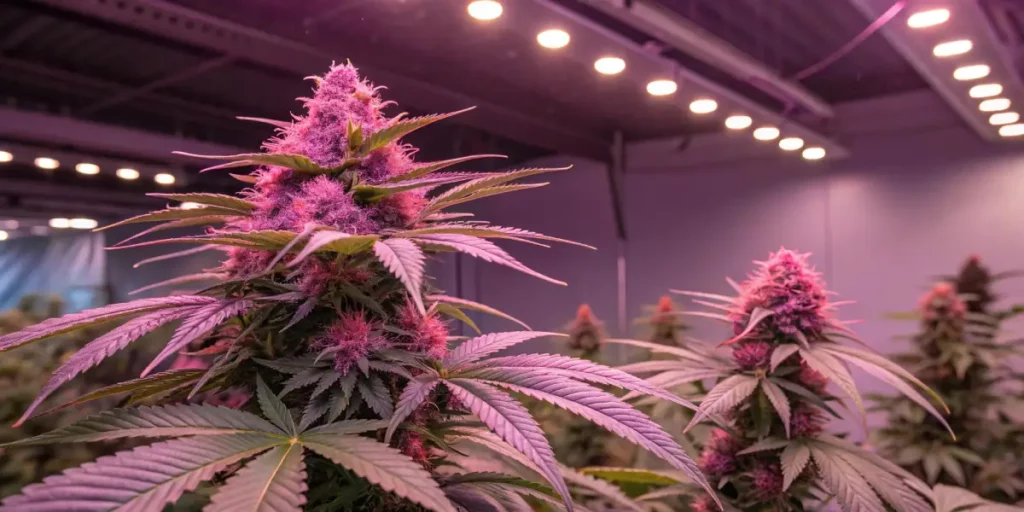
Is Pink Kush Worth Buying? Here’s What You Need to Know
Pink Kush is a well-known strain in the cannabis community, celebrated for its strong and relaxing effects. This Indica-dominant hybrid, believed to be a close relative of the legendary OG Kush, has captured the attention of both recreational users and medical patients. Its reputation is built on a potent THC content that can range from 18% to 24%, making it a choice strain for those seeking a powerful cannabis experience. The high THC levels often contribute to effects that are deeply relaxing, with reported benefits including stress relief and a sense of euphoria.
One of the remarkable qualities of this strain is its distinctive aroma and flavor profile. It is known for a sweet, floral scent with hints of vanilla and candy, offering an aromatic experience that’s as enjoyable as its effects. Many users describe its taste as being similar to its smell, providing a pleasant and satisfying smoking or vaping experience. This rich sensory appeal is a significant factor in its popularity, making it a worthy purchase for connoisseurs who appreciate both taste and potency.
From a cultivation perspective, this variety can be an attractive option for growers, especially those looking for a strain that combines quality output with a relatively easy-growing process. It typically has a flowering period of around 10 to 11 weeks and can yield generously under optimal conditions, both indoors and outdoors. Its resilient nature and mold resistance also make it a dependable choice for cultivators seeking a robust strain with high yields. As such, this strain not only benefits users with its effects and flavors, but also rewards growers with a bountiful harvest.
FAQs
What is Pink Kush?
Pink Kush is a popular indica-dominant hybrid strain known for its calming and relaxing effects. It is highly regarded for its unique pinkish pistils and dense, frosty buds. The strain stems from the legendary OG Kush lineage, often inheriting its robust kush flavors. Pink Kush is cherished for its sweet floral and vanilla aroma, making it a favorite among cannabis connoisseurs.
What are the effects of Pink Kush?
Pink Kush is predominantly known for its potent relaxation effects, making it an excellent choice for those seeking stress and anxiety relief. People who use Pink Kush often report feeling a soothing body high coupled with a sense of euphoria. Its sedative qualities are also praised for aiding in sleep and helping manage pain and discomfort, ensuring a peaceful, restful experience.
What are the typical flavors and aromas of Pink Kush?
Pink Kush is celebrated for its sweet and floral aroma with an undertone of vanilla and an earthy pine scent. When smoked or vaporized, it delivers a delightful combination of flavors that might include hints of candy, berries, and earth. This distinct mix makes Pink Kush not only potent in effect but also a treat for the senses.
Is Pink Kush suitable for medical use?
Yes, Pink Kush is often utilized for its medicinal properties. Patients turn to Pink Kush for its potential to alleviate chronic pain, muscle spasms, and migraines. Its calming effects can significantly help those with anxiety, depression, and insomnia. Moreover, its appetite-stimulating properties are beneficial for individuals undergoing treatments like chemotherapy, where appetite suppression is a side effect.
How should one consume Pink Kush for the best experience?
To enjoy Pink Kush to its full potential, moderation is key, especially for new users due to its high potency. It can be consumed in various forms such as smoking, vaporizing, or edibles. Many users find vaporizing to be a cleaner alternative that preserves the delicate flavors and aromas. As always, start with a lower dose to gauge your tolerance and find the most comfortable and effective experience for you.

